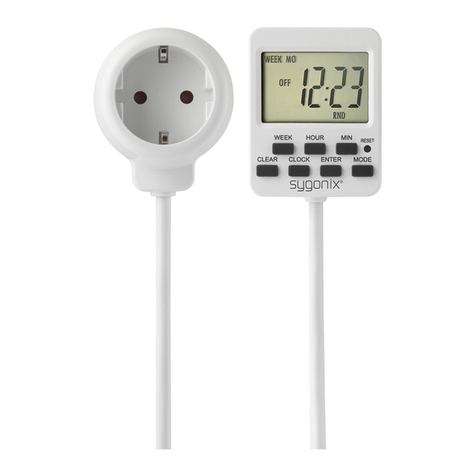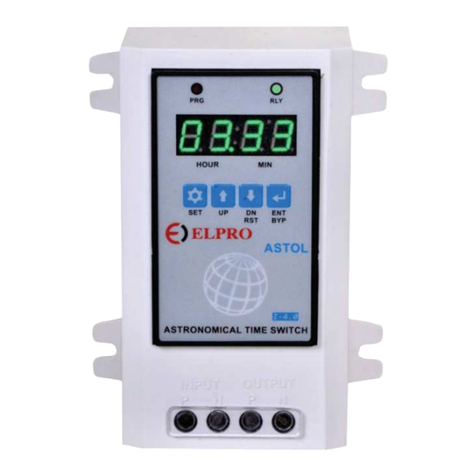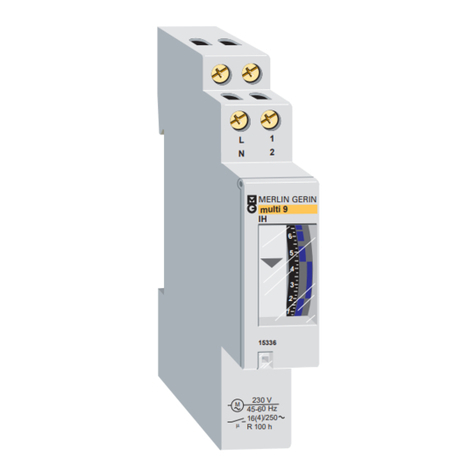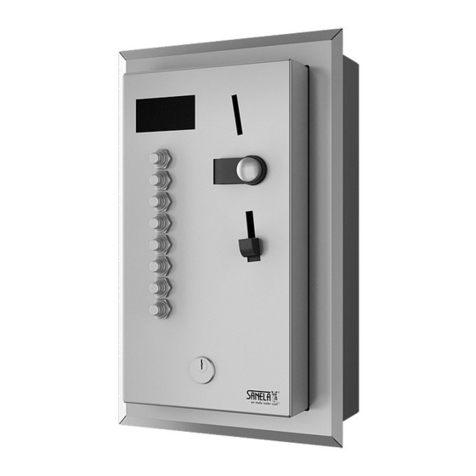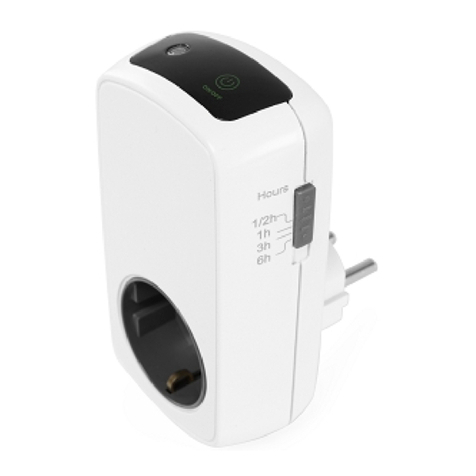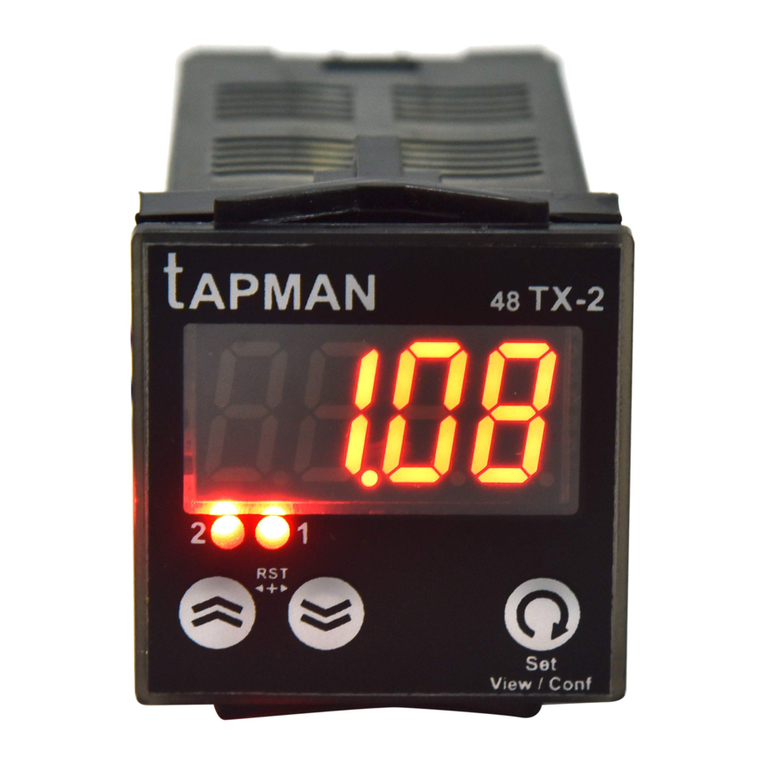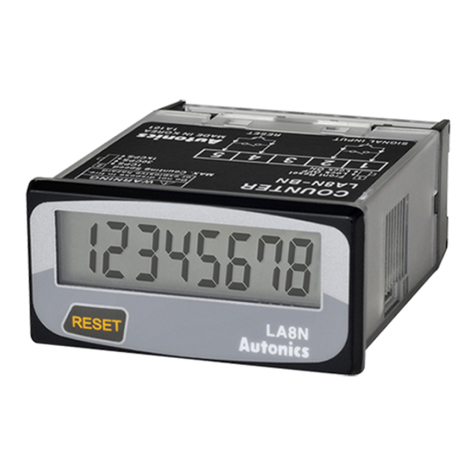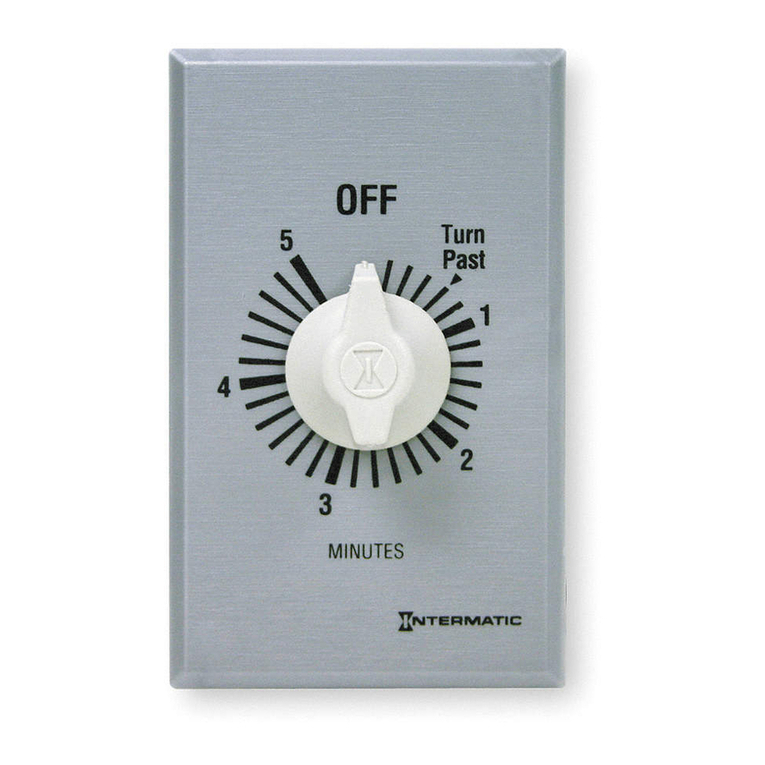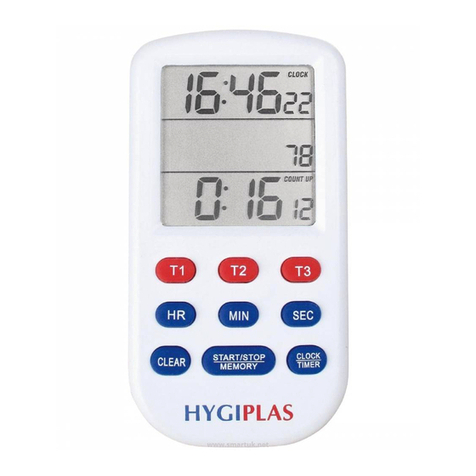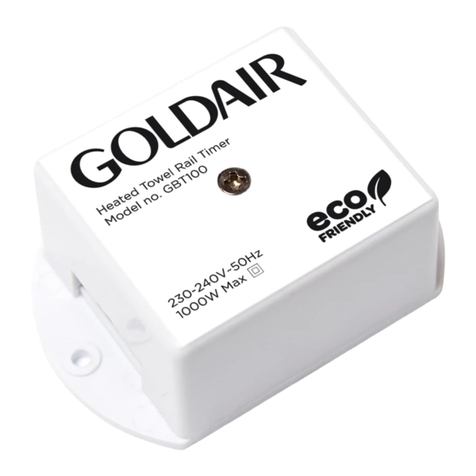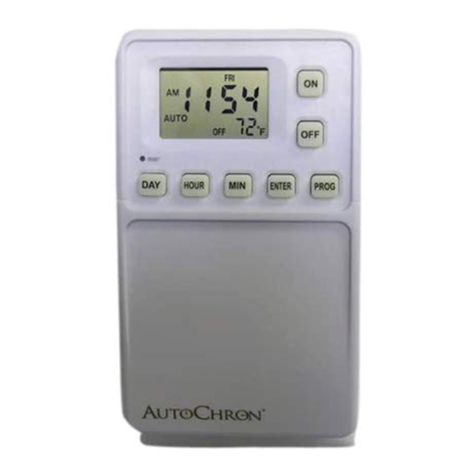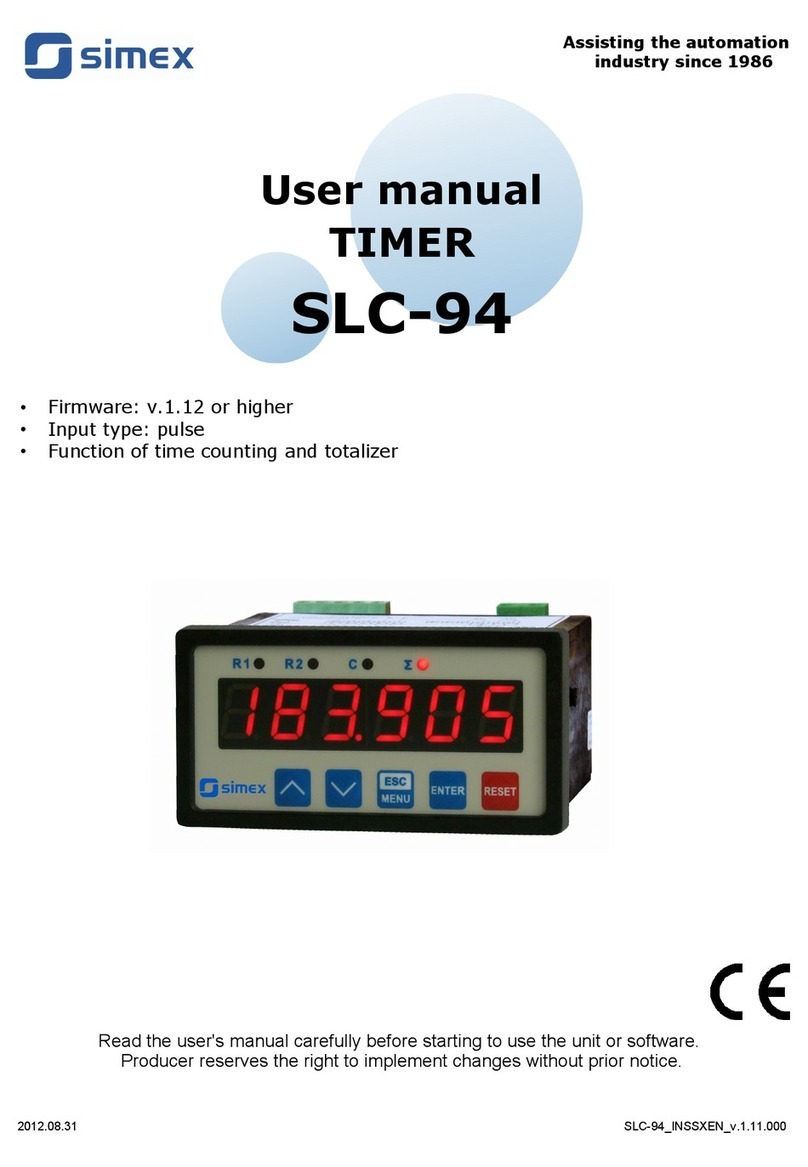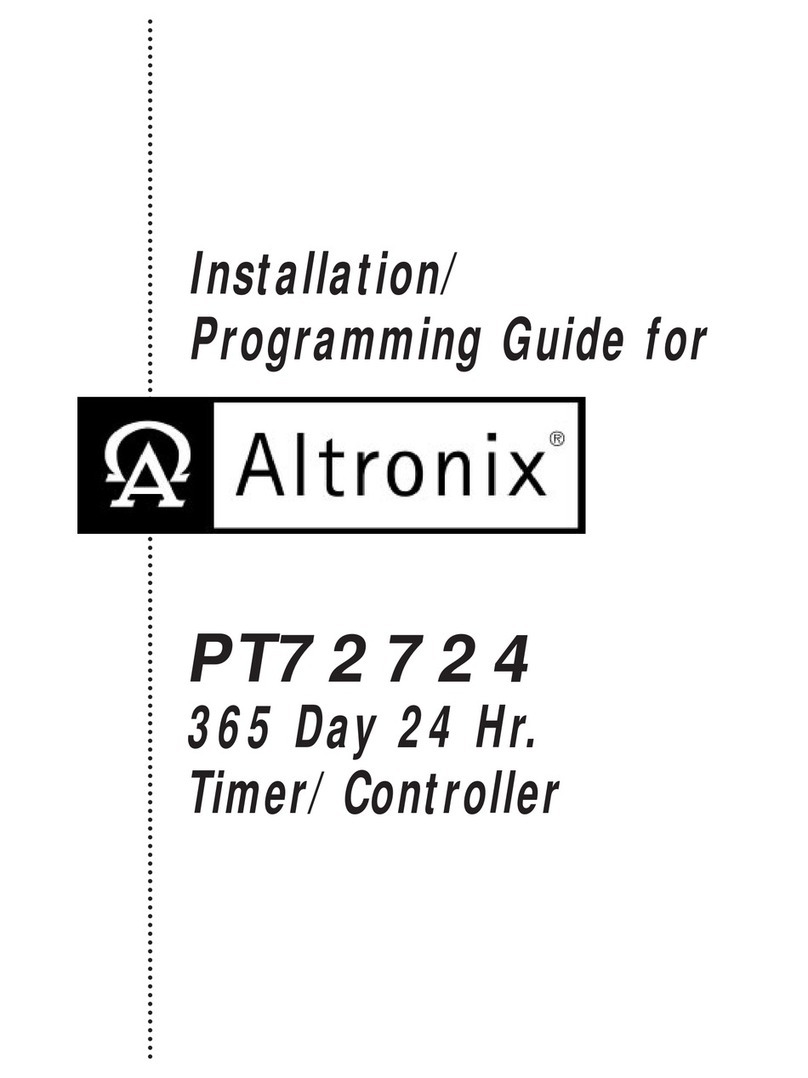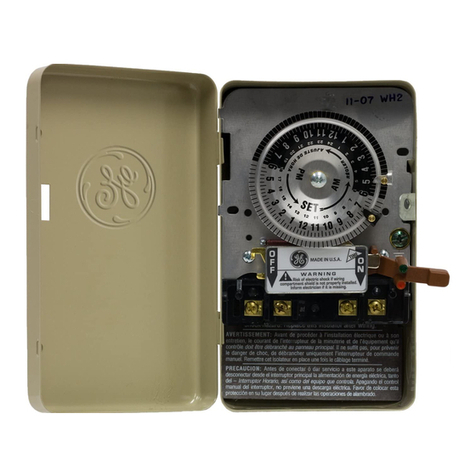Global Specialties 5001 Operation and maintenance manual

5001 u]$VERSAL
COUNTER-TIMER
INSTRUCTION,
OPERATION
ANDAPPLICATION
MANUAL
80-o1-oo37
1t88
GLOBAL
SPECIALTIES
1486
Highland
Avenue,
Unit2
Cheshire,
CT06410
(203)272-3285Tel.
(203)2724330Fpx

TABLE OF CONTENTS
5001 SPECIFICATIONS ....page
INTRODUCTION .Page
CONTROL
LOCATIONS
ANDDESCRIPTIONS ....eage
INITIAL INSPECTIONAND CHECKOUTPROCEDURE ..Paqe
OPERATING
INSTRUCTIONS .eale
OPERATING
MODES ...Paqe
SIGNALCONDITIONING ....eaie
DISPLAY HOLD/MEASUREMENT
CYCLEDELAY . .page
EXTERNALTIMEBASE .Page
MAINTENANCE
AND CALIBRATION .ea!e
CASEDISASSEMBLY ..page
CASE
REASSEMBLY ...Paqe
FUNCTIONALDESCRIPTION .pa6e
APPLICATIONS .
page
SERVICEAND WARRANTY
INFORI\4ATION .Paqe
LTST OF ILLUSTRATIONS
FIGURE
1. Control Locations-Front Panel . . . .
page 5
FIGURE
2. Control Locatj-ons-Rear Panel page 10
FIGURE
3. Signal Example ....page 20
FIGURE
4. Fuse and Trimmer Location . ..paqe 23
FIGURE
5. Case Disassembly/Reassembly .ea!e Zs
FIGURE
6. Block Diagram page 2i
FIGURE
'7. Period Application . ....page 3L
FIGURE
8. Time fnterval Application . . .
page 32
FIGURE
9. Signal Condit.ioning Circuit .
page 34
FIGURE
10. Event Counter Application . . .
page 35
L
4
t1
t5
1_5
L8
2L
2T
ZJ
ZJ
z6
28
?n
37


Impedance
Response
Sensitivit
Attenuator
TNPIITS:
5OO1 SPECIFICATTONS
2 inputs, A
FRONT
A INPIIT:
B INPUT:
and B. DC coupled, BNC connectors
1, llegohm // 25 pF
DC to L0 MHz
20 mV RMS
Xl, XL0, XL00 switch
selectable
Slope Select
Triqger
Range
Triqqer
Ranqe
Impedance
Response
LeveI -0.5v to +0.5v times
attenuator setting
rising edge, falling edge
switch selectable
Max. fnput
Voltaqe Xt- Atten:
+/-400v peak, DC to 30 kHz
+/-L00v peak, 30 kHz to l_OO
kHz
+/-20v peak, L00 kHz to l_ MHz
+/-5v peak, 1_
MHz to 10 MHz
XLO Atten:
+/-400v peak, DC to L MHz
+/-s9v peak, 1 MHz to LO MHz
XL00 Atten:
+/-400v peak, DC to L0 MHz
Level
I r{egohm // 25 pF
DC to 2 MHz
20 nV RMS
Xl, Xl-0, XL00 switch
selectable
-0.5v to +0.5v tines
attenuator setting
rising edge, falling edge
switch selectable
1 Megohn // 25 pF
(1k above +5v or below 0v
input)
LOO
kHz to 1-0
MHz,
50 ns pulse width rninimun
Slope Select
Max. Input
Voltage Xl_ Atten:
+/-400v peak, DC to 30 kHz
+/-LOOV peak, 30 kHz to LOOkHz
+/-20v peak, L00 kHz to t MHz
+/-IOv peak, L NIHz
to 2 MHz
Xl-O Atten:
+/-400v peak, DC to j_ MHz
+/-J-OOv peak, I MHz to 2 MHz
Xl-00 Atten:
+/-400v peak, DC to 2 MHz
L input, external tirnebase.
DC coupled, BNC connector
fmpedance
Response
Sensitivit
Attenuator
REAR PANEL

REFERENCE:
}IODES:
Input
ne_gulrengnt
t'tax.-f nput
--wtlese
Crystal Oscillator
Frerency
@@
Temperature
Stabilitv
Frequency
TTL levels
+20v, -L5v
MHz
ppn/year
+/-4 ppm, 5C to 35C
L0 MHz maxi 4 ranges with
gate tirnes of O.OI/O.L/1..O
/LO seconds; display in
kHz; A input only
400 ns to L0 sec; 4 ranges
with L/Io/too/tooo cycle
average; display in
microseconds; A input only
10 MHz
rnax
into A input, 2
MHz into B input; 4
ranges, counts cycles at A
input over L/Lo/Ioo/LoOo
cycles at B input.
200 ns to l-0 sec; 4 ranges
with 1/Lo/t oo/tooo
measurement cycle average
(one measurement cycle
being the tirne interval
from the selected edge at
the A input to the
selected edge at the
B input).
L0 MHz max;counts to
99
,999
,999
i one range; A
input only.
+/- (tirne base error X
frequency) +/- l_ LSD. LsD
displayed Loo/ ),o/I/ o.I
Hz for o.o),/o.VL.O/Lo
second gate tirnes
+/- (tirnebase error X
period) +/- ((trigger
error*/cycles averaged) X
period) +/- 1 LSD, LsD
displayed loo/Io/I/o.I
ns for I/L0/1,oo/Iooo
cycles averaged
+/- l- LSD; LSD displayed -
I/o.I/o.oI/o.00L for
L/LO/LOO/LOAO
cycles
averaged
L0
<4
Period
Frequencv Ratio
Time Interval
Event Count
ACCTJRACY: Frectuencv
Period
Frequency Ratio

Tine Interval
Event Count
+/- (timebase error X time
interval) +/- A input
trigger error* +/- B input
trigger error* +/- L count
per cycle averaged
- no inherent error; LSD
displayed - l- count
CONTROI,S
DISPI,AY
POWER
DIITENSIONS
OPERATING
TE}TPERATT'RE
INCLUDES
* Note: Trigger
power; 5 mode selector switches; 4 range
selector switches; run; hotd; reset; display
delay; internal/external timebase switch; plus
trigger Ievel, slope select, and attenuator
for both A and B inputs
8 digit, 7-segrnent O.43 inch LED display;
decirnal point indicates time in rnicroseconds,
frequency in kHz; discrete LEDs indicate
OVERFLOW
(counter overflow) and GATE (gate
open); delay feature varies period between
measurement cycles from 75 msec to 7.5 seconds
with DELAYcontrol, detent position holds next
measurement reading indefinitely
l-05-L35 VAC, 57-63 Hz, 10 VA maximum (ZL5-Z3O
VAC, 50-60 Hz version available)
3 x LO x 7 inches H x W x D (76 x 254 x 1_78rnrn)
3.0 }bs (1.4 kg)
0C to 50C, calibrated at ZSC
+/- 5C
instruction manual
error = pe?k-tg-pgak ngise vgltaqe on input
signal slope (in volts per second)

INTRODUCTION
The nodel 5001-Universal Counter-Timer is designed for the
electronic measurement and display of freguency, period, tine
interval, and counted events. Both input channels feature ful1
and independent signal conditioning by mqans of attenuation,
slope selection, and variable trigger level. The variable
delay/hoId functj-on allows the introduction of a delay between
measurement cycles of from 75 nilliseconds to 7.5 seconds, or the
results of a single measurement can be displayed indefinitely.
Ease of use combine with rugged design to provide an
instrument that will fill a wide range of requirements.
FREQUENCY
measurements can be rnade up to 10 ltHz, with a
choice of displayed resolution of t-00 Hz, )-OHz, L Hz, or O.i-Hz
using the gate tines of 0.01 seconds, 0.L seconds, 1 second, or
1.0 seconds.
PERIOD
measurements are easily accomplished covering the
range frorn 400 nanoseconds to L0 seconds. By selecting L, L0
l-00, or 1-000cycle average, a resolution of 100ns, L0ns, 1ns, or
0.Lns is achieved.
The ratio of the frequency at the A input compared to that at
the B input is displayed by using the FREeuENcy RATro mode. The
number of cycles averaged will- deternine the resolution, with up
to third decimal place accuracy possible using I-OOOcycles.
The TIME INTERVAL
mode will measure the elapsed time, from
200 nanoseconds up to L0 seconds, between an edge occurring at
the A input and a separate edge at the B input. Either a rising
or falling edge can be selected for either input, naking this
mode useful for measuring not only the tirne between events, but
also for measuring pulse widths.
When the EVENT
COUNTmode is selected, the 5OO1will display
the number of edges, either rising or falling, that appear at the
A input. These events can occur at a rate of up to f.O MHz, and
the count can be frozen or reset at any time by means of the
front panel switches.
Using the rear panel EXTERNAL
TIMEBASE INPUT provides
capabilities such as extended resolution or automatic scaling
beyond that which is nornally available using the Frequency Ratio
mode. This is, of course, in addition to the ability to connect
a high-precision 10 MHz clock source if higher accuracy is
required than that of the normal timebase.
The many features and functions of the 5001, combined with
the bright 8 digit, 0.43 inch LED display with automatic decirnal
point placement and separate annunciators for gate-open and
counter-overflow conditions, result in a flexibility and ease of
use that are appropriate for any counter-timer demands, aI1 in
one rugged and reliable instrument.

----=:-1---ffi 1:r rr rFr
_cYcl.at I I lo ttoo tlooot I ^ ll ^
FISAL COUNT
Figrure 1 - Control Locations - Front Panel
CoNTROI,LOCATIONS AI{p DESCRTPTTONS
(1) PwR
Power switch. Push in this red pushbutton to turn the unit
ON, push again to release to OFF. The display will Iight,
dependent upon the switch settings. If none of the other
pushbuttons are pushed in, the display will be bIank.
(2' FREQ.
This first gray pushbutton selects the Frequency Counter rnode
of operation. Either the rising or falling edge (as determined
by the setting of the sLoPE switch) of the signar applied to the
A input will be counted during the gate tine selected by the
white pushbuttons (either .01, .1, 1', or l-0 seconds), and wirr be
displayed in kiloHerLz with the appropriate decimal point. The
measurernent range extends frorn DC to L0 MHz.
(3) PERToD
The second gray pushbutton selects the Period Deasurement
mode of operation. This measures the tirne that elapses from one
rising edge to the next rising edge, or one fatling edge to the
next falling edge (as determined by the setting of the sl,opE
switch), of the signar applied to the A input. This measurement
can be made for a single cycle, or for 10, LOO, or I-OOOcycles
(depending on the white pushbutton selected), giving a resolution
of L00ns, 1-0ns, lns, or O.Lns respectively. The tirne is
displayed in microseconds, with the decirnll point automaticatly
positioned. Multiple cycle measurements are aisplayed as the
average value of a single-cycle event. The measurement range
extends from 40Ons to L0 seconds.
(4) RATrO
The third gray pushbutton selects the Frequency Ratio mode of
operation. The frequency of the signal present at the A input is

compared to the frequency at the B input, and the ratio of A/B is
displayed. This can be accomplished for 1, 10, 100, or L000
cycles at the B input (as deternined by the selection of the
white pushbuttons), displaying the ratio with resolutions out to
the third decinal place. Either the rising or falling edge can
be selected for both the A and B inputs. fnput frequencies can
range from DCto 10 MHz into the A input, and DCto 2 NlHz
into
the B input.
(5) TruE
The fourth gray pushbutton selects the Tine Interval mode of
operation. The amount of tine that elapses between a signal edge
that occurs at the A input and an edge at the B input is
measured, and displayed in microseconds. In essence, the signal
at A starts the timer, and the signal at B stops it. Either the
rising or falling edge can be selected for both the A and B
inputs, and the display can be the average of the result of
either Lt 10, L00, or L000 A-to-B events (as determined by the
selection of the white pushbuttons). It is inportant to note,
however, that whereas the resolution will increase when more
cycles are averaged, the accuracy of the reading does not. This
is due to the inherent +/- 1 count uncertainty, coupled with the
fact that the instrument actually takes an entirely new
measurement for every A-to-B transition. There is therefore a
+/- 1, +/- 10, +/- L00, or +/- l-000 count uncertainty for the 1-,
10, l-00, and 1000 cycle averages, and absolute reading accuracy
does not change. The Time fnterval mode is functional over a
200ns to L0 second range.
(6
) conMr
The fifth gray pushbutton selects the Event Counter mode of
operation. The instrument will display the number of rising or
falling signal edges (deternined by the setting of the SLOPE
switch) that occur at the A input. The rate can be up to 10 MHz,
and the maximum count displayed before counter overflow is
99,999,999. In the Event Counter rnode, the white pushbuttons
perforrn the following functions:
(71 RUN. The first white pushbutton, when
pressed in, will allow the 500L to display, in
real tine, the number of events that have been
counted. If the RESBT button had been
pressed, the display will be cleared, with
only the rightmost decirnal point lit, when RUN
is selected. If the HOLD button had been
pressed in, selecting RUNwill update the
display from the frozen count to the present
count and allow real-time display of the count
to continue.
(8) HOLD. The second white pushbutton provides
a ttdisplay holdtr function. When selected, the
instrument will freeze the count on the
display, but the running count will continue
to accumulate. When the RUNbutton is pressed

in, the display will cbange irnrnediately to
reflect the total count. If the RESETbutton
is pressed, the internal counters will clear
to zero, and the display wilI clear to show
only the rightnost decimal point.
(9) RESET. The third white pushbutton wi1l
reset the internal counters to zero and wiII
clear the display. When
pressed in, only the
rightmost decimal point witl be 1it.
(7',) .Olll/RnN
This first white pushbutton affects the operation of the
instrument in the following way:
In the Frequency Counter mode, the .OL second gate time
selected.
In the Period, Frequency Ratio, and Tirne Intenral modes
operation, the display will reflect the measurement of
signals over a single measurement cycle.
is
of
the In the Event Counter mode, the RUN function is selected;
the 5001 will count signar edges and display the totar in
real time.
(8).L/Lo/HoLD
The second white pushbutton affects the operation of the
instrument in the following way:
rn the Frequency counter mode, the 0.L second gate tirne
is selected.
rn the Period, Frequency Ratio, and Time rntenral modes
of operation, the display wirr refrect the average signal
value of a single cycle by measuring ten cycles and dividing
the result by ten.
In the Event Counter mode, the HOLD function is
serected; the 5001-
will continue to count signal edges, but
the display wilr not be updated until the RUN
button is
pressed back in.
(e ( l/t_oolRESET
The third white pushbutton affects the operation of the
instrurnent in the following way:
rn the Frequency bounter mode, the L.o second gate tine
is selected.
rn the Period, Frequency Ratio, and Tine rnterrrar modes
of operation, the display wirl reflect the average signal
value of a singre cycle by measuring one hundred cycles and
dividing the result by one hundred.
fn the Event Counter mode, the RESET function is
selected; the 5001-
will stop counting, the internal counters
will clear to zero, and the display wirl b1ank, leaving only
the rightmost decirnal point lit.
(10) 10llooo
The fourth white pushbutton affects the operation of the
instrurnent in the following way:
rn the Frequency counter mode, the L0 second gate time
is selected.

In the Period, Frequency Ratio, and Tine Interrral rnodes
of operation, the display will reflect the average signal
value of a single cycle by neasuring one thousand cycles and
dividing the result by one thousand.
Although it is not marked as such, this button also
performs the HOLD function in the Event Counter mode.
(11) A rNPrrr
This BNC
connector is the input that wiII beused
for aII
measurements
- alone whenin the Freguency, period, and Event
counter modes, and in conjunction with the B input when in the
Frequency Ratio and Time fnterval modes.
(12) B rNPrrr
This BNC
connector will be used for signal inputs only in the
Frequency Ratio and Tirne rnterval modes of operation, and then
only in conjunction with the A input. There are no circumstances
when the B input witl be used alone. rf the Frequency, period,
or Event counter rnodes are selected, dDy signal present at the B
input will be ignored. Under these conditions, it is good
practice to disconnect the signals to the B input, but it is not
essential to do so.
(13) srpPE
These switches determine the signar edges, either rising or
falling, that the 5001-
will use in the various measurement modes.
The selected edge wirr be the one that the instrument uses to
count, ot, in the Time rntervar mode, will be the signar that
starts or stops the tirner.
(14) ATTEN.
The ATTENuator controls are used to select the amount of
attenuation that the input signals receive before being counted
by the 5001. rn the xl" position, the furl signar is passed to
the input stage of the instrument. when x10 is serected, the
counter sees a signal that is L/ 10th the amplitude of the
original, and when in Xi-00, the signar is L/l-ooth the original.
This is usefur in obtaining a stabre and accurate count, for
there is often noise present on a signal, and if the lever of the
signal is attenuated, so will the noise be.
(15) TRIG. LEVEL
The TRfGger LEVEL controls determine the voltage 1evel at
which the 500L will recognize and count the input signar. with
the ATTENuator switches in the x3- position, the range of the
control extends from -0.5 volts to +0.5 volts. The
twelve orclock position corresponds to a zero volt threshold,
one orclock is +0.L vo1ts, two orclock is +o.2 vorts, and so on.
The eleven orclock position will set a threshold of -0.L voIts,
ten orclock is -O.2 volts, and so on. When the ATTENuator switch
is in the x1-0 position, the trigger 1evel range is from -5 volts
to +5 volts, and when the ATTENuator switch is in the Xt-O0
position, the range is from -50 volts to +50 volts. The
threshord points continue to roughly correspond to crock

positions. using the ATTENuator and TRrGger LEVEL controls
together will allow a wide range of signals to be rneasured, such
as_AC.superimposed on DC, logic levels for TTL, EcL, and ci,Ios,
and ringing or noisy digital signals.
(16) DISPLAY
. The display consists of eight seven-segrnent LEDs with a 0.43
inch character.height. Leading zeros are blanked in all modes,
1.,d.decina1 points automatically display Freguency in kiloHertz,
Period and Tirne rnterval in micioseconai, and Freiuency Ratio and
Event Count in units.
(17) GATE
The GATE LED lights to indicate that a measurernent cycle is
in progress. rn the Freguency node, the LED wirl liqht for o.ol-,
0.1, 1.0, or l-0 seconds, depending on the selection of tne white
pushbuttons. The LEDwill be off for a tirne between 75
nilliseconds and 7.5 seconds, as determined by the setting of the
DET,AY
control. rn the period and Frequency Ratio modes, tne lno
will be lit for the duration of t, 10; 1oo, or Looo cyci.es
present at the A input, depending on the setting of the white
pushbuttons, and be off for the duration of one cycle at the A
input, or the time set by the DELAY control, whiclever is longer.
rn the Tirne rnterval- mode, the LED will be rit for t-, 10, Loo, ot
L000 A-to-B transitions, depending on the setting of the white
pushbuttons, and be off for the duration of one e-to-a transition
or the time set by the DEl,Ay control, whichever is ronger. rn
the Event Count mode, the LED will be lit continuously; tfr" DELAy
control will have no effect.
(18) OVERFTFW
The ovERFLow LED wirr light whenever the count exceeds
99999999. This will occur, for example, when a freguency over
L0 MHz
is input and the gate time is l-0 seconds, or when-a tirne
interval over LO seconds is measured with LOOO
cycles averaged.
(le) DEraY
The DET,AY
contror arrows the introduction of a time
between one reading and the next. This deray varies from
maximum
of approximatery 7.5 seconds when thL control is
clockwise, to a minirnun of approxinatery 75 rnilliseconds
control is in the fuI1y countercrockwise - but before the
detent - position. When the control is clicked into the detent
position, labeled HOLD, the 5001-
will take one measurement and
display the results indefinitely. This control also serves the
function .of I'primlng" the instrument for single cycle events.
Further i-nformation on the use of this control can be found in
the OPERATING
INSTRUCTIONS
section.
delay
a
ful1y
when the

INTERNAL
O IMT---]O
EXTERNAL
TIMEBASE
Fignrre 2 - Control Ipcations - Rear Panel
(20) TNTERNAL/EXTERNAL TIITEBASE
The INTERNAL/EXTERNAL
TfMEBASE switch allows the selection
of either the internal Lo MHz reference, or an externally applied
reference within a freguency range of i-oo kKz to 10 yl[z. rf no
external reference is present on the EXTERNAL
TIMEBASE INPUT
connector, the switch MUSTbe in the TNTERNAL
position for the
500L to function. Use o-f an externaf timebase can provide such
added features as increased resolution, greater accuracy, and
automatic scaling. Further discussion and examples can be found
iN the OPERATING
INSTRUCTIONS
and APPLICATIONS sections.
(21) EXTERNAL TIITiEBASEINptII
This BNC connector is used as the input for an external
timebase signar. The signar must be TTL 1ever, with a frequency
between 100 kHz and l"o yrHz, having a rninimum pulse width of
50 nanoseconds. rf the external timebase is not in use, it is
goog practice to disconnect any signar present at this BNc, but
it is not essential to do so.
10

2.
3.
TNTTIAL INSPECTTON AND CHECKOIII PROCEDI'RE
In order to accomplish the initial inspection of the 500L,
the following is reguired:
l-. A grounded (three-prong) so/6o Hz AC outlet of the correct
voltage.
A l-0 MHz sine wave signal source of L00 rnirlivolt RMS
amplitude, no DC offset.
A l-00 kHz sine wave signar source of LOo milrivolt RMS
amplitude, no DC offset.
A l- MHz TTl,-level signal source.
Note signal levels for iterns 2 and 3 above are not critical.
However, if different arnplitudes are used, the ATTENuator and
TRrc LEVEL settings outrined in the forlowing will have to be
adjusted accordingly.
PROCEDI'RE
l-. Plug the 5001- into the outlet. Select the Freguency Counter
mode and the .0L second gate tirne (the first wnite
pushbutton). Turn the DELAy contror to ninimum (fulry
counterclockwise, but before the detent IHOLD] position).
select the TNTERNAL
TTMEBASE
from the rejr paner. Turn
pohrer oN - the dispray should now right, showing .o on the
right.
2. Connect the l-0 yIHz signal source to the A input. Switch the
A input ATTENuator to XL. set the A input tnrc LEVEL
control to the L2 orclock position - the display shourd now
read L0000.o, indicating the frequency in kiloH-ertz, and the
GATE LED will flash rapidly.
3. Select the .L second gate tirne (the second white pushbutton)
- the display will chlnge to 1oooo.oo. Note that the GATE
LED flashes more srowly, reflecting the longer gate tirne.
4- Se1ect the l- second gate tirne (the third white pushbutton)
the display will change to I-OOOO.OOO,
and when tne 6ATE LED
lights it will be on for one second.
5. Select the L0 second gate tine (the fourth white pushbutton)
- the display will chlnge to Loooo.oooo. The GATELED wirl
now stay on for ten seconds as the measurement is being
made.
6. Rotate the DEr,Ay contror to its furl clockw j_se position -
note that the "offfr time of the GATE LED (the time between
measurernents) increases to at least 7.5 seconds. Return the
control to its previous (countercrockwise - before the
detent) position.
4.
Lt_

7. Connect the L MHz TTL-IeveI signal to the EXTERNAL
TfMEBASE
INPUT BNC on the rear panel. Switch the INTERNAL/EXTERNAL
TTMEBASE
switch to the EXTERNAL
position. select the .1
second gate tirne - the display should now read t o0ooo.oo.
Note that the GATE
LED now lights for j- second, and the time
between measurements is approxinately L.5 seconds. Return
the TNTERNAL/EXTERNAL
TTMEBASE
switch to the TNTERNAL
position and disconnect the signal going to the EXTERNAL
TIMEBASE INPUT BNC.
8. connect the 1,00 kHz signar to the B input. switch the B
input ATTENuator to the Xl- position and set the B input TRIG
LEVEL control to the J.2 o'crock position. serect the
Frequency Ratio mode, 1 cycle averagle (first white
pushbutton). The display should now read t_OO.
9. serect in order the 10, l-oo, and Looo cycre averages (the
second, third, and fourth white pushbuttons) - the dispray
will change to read i-OO.O,
1OO.OO,
and LOO.'OOO,
respectively.
l-0. Disconnect the signars going to the A and B inputs. connect
the L00 kHz signal to the A input and serect the period
mode. The display will read 10.Oo0O
microseconds and the
GATE LED will ftash rapidly.
1l-. select in order the Loo, 10, and l- cycle averages. The
display will change to read LO.OOO,
10.00, and L0.0
microseconds, respectively. The GATE
LED wirl be on too
briefly to be seen in the t_O
and L cyc1e averages.
12. select the Event counter mode. The display will clear and
immediately begin to show the accurnulating- count. The GATE
LED will be Iit.
L3. Press in the HoLD (second white) pushbutton - the dispray
will rrfreezerrr but the sooL wirl iti-rr be accumuratin-g
counts internally. The GATE
LED will remain lit.
]-4. Press in the RUN (first white) pushbutton - the readigg wirl
change to update the count, and will show the count
accumulating. rf the count has been in progress for more
than 100 seconds, the OVERFLOW
LED wiII be lit.
L5. Press in the RESET (third white) pushbutton - the dispray
will clear, showing only the righlmost decimar point,- anl
the GATE LED wiII not be lit.
l-6. Press in the RUN pushbutton - the counting wirl begin again
frorn zero.
L7. connect the l-00 kHz signar to both the A and B inputs
simultaneously. Select the Time fnterval mode. Switch the
A input sLoPE switch to the rising edge (riqht-hand side)
position and the B input sl,opE switch to the falling edge
I2

(left-hand side) position. Set both TRIG LEVEL controls to
their L2 orclock positions. select 1- cycle average - the
display should indicate approximately 5.0 microseconds.
l-8. Select in order the 10, L00, and l-000 cycle averages. The
display will change to read 5.00' 5.000, and 5.0000
microseconds, respectively. Sorne instability nay be noted
in the readings as more cycles are averaged; this is normal,
as it reflects the +/- L count error that exists for each
cycle when in the Tirne Interval mode.
i-9. Slowly rotate the A input TRIG LEVEL control clockwise - the
reading will decrease until the display indicates
approximately 3 microseconds, at which point measurements
w11f cease. Rotating the control back counterclockwise will
restart the rneasurements, and the readings will increase to
approximately 7 microseconds at which point measurements
will again cease. Return the control to the L2 orclock
position.
Repeat step L9 using the B input TRIG LEVEL controli the
results should be identical.
20.
2L. Change the A input SLOPE
switch to the falling edge (left-
hand side) position and the B input sLoPE switch to the
rising edge (right-hand side) position. Repeat steps L9 and
20. The TRIG LEVEL controls will now cause the readings to
increase when they are rotated clockwise, and decrease when
they are rotated counterclockwise.
This concludes the initial inspection and checkout of the 5001-.
NoTE: If no frequency sources are available, a rudirnentary test
of basic instrument functionability can be accomplished using the
built-in SELF-TEST mode, the procedure for which follows. This
is by no means a thorough test, but it will verify proper
operation of some internal logic and counting functions.
With power turned ON, press in both the Frequency and Period
mode pushbuttons. Se1ect the .0L second gate time (first
white pushbutton), INTERNALtimebase, and minimum DELAY
(control fuI1y counterclockwise, but before the detent)
the display will indicate l-o0o0.o regardless of the setting
of the ATTENuator switches, TRIG LEVEL controls, oF SLOPE
selectors.
Rotate the DELAY control to its fuII clockwise position -
note that the rroffrr time of the GATE LED (the time between
measurernents) increases to at least 7.5 seconds. Return the
control to its previous (counterclockwise - before the
detent) position.
1".
2.
13

3. Select in order the .L, Lt and L0 second gate tines. The
display wiIl read l-0000.00, l-OOOO.OOO,and O0OO.0OOO
(with
the OVERFLOW
LED lit), respectively.
This concludes the SELF-TEST checkout procedure.
t4

OPERATING TNSTRUCrIONS
Because of the tremendous functionar versatility of the
5001-, these instructions will treat each of the features of this
instrunent individually. There is first presented a description
of how to use each of the operating rnodes, then a discussioh of
how to adjust the signar conditioning at each of the inputs,
fo]lowed by a description of the use of the Display
Hold/Measurement cycle Delay feature, and finalry the use of the
External Timebase Input.
OPERATING IITODES
Freguency Counter
To make a frequency measurement:
L. select the TNTERNAL
timebase from the rear paner.
2. Turn power oN by pressing in the red pwR pushbutton.
3- serect the Freguency counter mode by pressing in the
FREQ (first grly) pushbutton.
4. Set the DELAY
control to minirnum (fully
counterclockwise, but before the detent).
5. connect the input signar to be measured to the A
input BNC. Follow the Signal Conditioning
instructions, below.
6. Select a gate time of .01_,.1, I, or L0 seconds, as
desired, to obtain a resolution of LOO
Hz, LO Hz,
1,
Hz, oF 0.1_
Hz, respectively. The display will
indicate the frequency in kilottertz.
7- The GATE LED will be on during measurement cycles and
off between measurement cycles. Actual measurement
rate is deternined by the sum of the GATE
tirne
selected, the DEr,Ay tirne selected, and a fixed amount
of display latch rrhousekeepingfl tirne.
8. The OVERFLOW
LED will light in the Frequency Counter
rnode onry when a frequency of 1-0 MHz or greater is
measured using a GATE
time of LO seconds.
PeriodTo rnake a period measurement:
L. select the TNTERNAL
timebase from the rear paneI.
2- Turn power oN by pressing in the red pwR pushbutton.
3. serect the period rnode by pressing in the pERroD
(second gray) pushbutton.
4. Set the DELAY
control to rninimum (fully
counterclockwise, but before the detent).
5. connect the input signal to be measured to the A
input BNC. Follow the Signal Conditioning
instructions, below.
6. Select whether the rneasurement will be taken every
cycle or averaged over 10, l_OO,
or I_OOO
cycles. The
resulting resolution will be 3_00ns, 10 ni, 1 nsr or
O.1 ns, respectively, and the display will indicate
the period in nicroseconds.
l_5

7. The GATE LED will be on during measurement cycles and
off between measurement cycles. Actual measurement
rate is determined by the sum of the total period of
the selected number of input signal cycles, the
DELAYtirne selected, and a fixed amount of display
Iatch rrhousekeepingtt tine.
8. The OVERFLOW
LED will- light in the Period rnode when
the period measured is equal to or greater than
L0 seconds, L second, 100 rnilliseconds, or
l-0 rnilliseconds for l, 10, l-00, or l-000 cycles
averaged, respectively.
Frequency Ratio
To make a freguency ratio measurement:
L. Select the fNTERNALtirnebase from the rear panel.
2. Turn por{rer ON by pressing in the red pWR pushbutton.
3. Select the Frequency Ratio mode by pressing in the
RATIO (third gray) pushbutton.
4. Set the DELAYcontrol to minimum (fulty
counterclockwise, but before the detent).
5. Connect the input signal with the higher frequency to
the A input, and the Lower frequency signal to the B
input. Fo1low the Signal Conditioning instructions,
below. Note if desired, the higher frequency
signal may instead be connected to the B input. This
will result in a display of less than t-. Bear in
mind that the available resolution is lessened when
used in this configuration.
6. Select whether the measurement will be taken every
cycIe, or averaged over 10, l_00, or L000 cycles. The
resulting resolution will be in whole units, or to
the first, second, or third decirnal place,
respectively, and the display will indicate the
numerical ratio of the A input frequency divided by
the B input frequency.
7. The GATELED will be on during measurement cycles and
off between measurement cycles. Actual measurement
rate is deterrnined by the sum of the total period of
the selected number of input signal cycles at the B
input, the DELAYtirne selected, and a fixed amount
of display latch rrhousekeeping" time.
8. The OVERFLOW
LED wiII light in Frequency Ratio rnode
whpn the qatio me-asured is_equal to or greater than
Loo/L, Lot
/L, Loo/L, or l_o"/r for l-, 10, 1oo, or l-000
cycles averaged, respectively.
Tine Intenral
To make a time interval measurement:
l-. Select the INTERNAL timebase from the rear panel.
2. Turn power ON by pressing in the red PWR
pushbutton.
3. Select the Tine Interval mode by pressing in the TIME
(fourth gray) pushbutton.
4. Set the DELAYcontrol to rninimum (fully
counterclockwise, but before the detent).
5a. ff the elapsed time between two separate events is
16

to be rneasured:
L. Connect the signal that is to start the timing
sequence to the A input. Determine whether a
rising or faLling edge is appropriate and set
the A input SLOPE switch accordingly.
2. Connect the signal that is to terminate the
timing sequence to the B input. Deterrnine
whether a rising or falling edge is appropriate
and set the B input SLOPEswitch accordingly.
3. Follow the Signal Conditioning instructions,
below, for proper setting of the controls other
than the SLOPEswitches.
5b. If the pulse width of a single signal is to be
measured:
L. Connect the signal to both the A and B inputs
simultaneously.
2a. If the rrhighrr time of the signal is to be
measured, set the A input SLOPEswitch to the
rising (right-hand side) position and the B
input SLOPEswitch to the falling (left-hand
side) position.
2b. If the rrlowrr tirne of the signal is to be
measured, set the A input SLOPE
switch to the
falling (Ieft-hand side) position and the B
input SLOPEswitch to the rising (right-hand
side) position.
3. Fol1ow the Signal Conditioning instructions,
below, for proper setting of the controls other
than the SLOPEswitches.
6. Select whether the measurement will be taken for
every A-to-B transition, or averaged over 10, LOO, or
1-000such events. The resulting resolution will be
L00 ns, L0 DS, L DS, or 0.L ns, respectively, and the
display will indicate the tine interval (or pulse
width) in microseconds. For single, non-recurring
events, set-up the 5001-as follows:
a. Select L cycle average (the first white
pushbutton).
b. Rotate the DELAY control fully counterclockwise
to the HOLD (detent) position.
c. Rotate the DELAY
control slightly clockwise
until a rrclickrr is heard. This should be the
minimum position, before the detent. The GATE
LED should now be on. This indicates that the
5001- is rrprinedrr, ready to measure and display
the first A-to-B transition.
For multiple, recurring events, it is not necessary to
rrprimett the instrument; simply select the desired number
of cycles averaged.
7. The GATE LED will be on during measurernent cycles and
off between measurement cycles. The measurement
cycle begins with the first selected (rising or
falling) edge at the A input, and ends with the l-st,
l-Oth, 1o0th, or l-000th selected edge at the B input.
L7
